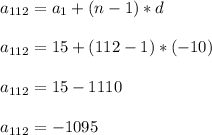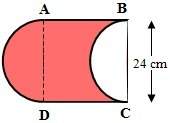Write the explicit
rule for the nth term.
Then find the 112th term.
{15, 5, -5, -1...

Mathematics, 06.12.2020 05:40 amandasantiago2001
Write the explicit
rule for the nth term.
Then find the 112th term.
{15, 5, -5, -15...}

Answers: 1
Another question on Mathematics

Mathematics, 21.06.2019 14:00
Which product is positive a is 2/5 -8/9 -1/3 -2/7 b is -2/5 8/9 -1/3 -2/7 c is 2/5 8/9 1/3 -2/7 d is -2/5 -8/9 1/3 2/7
Answers: 2

Mathematics, 21.06.2019 16:30
11. minitab software was used to find the lsrl for a study between x=age and y=days after arthroscopic shoulder surgery until an athlete could return to their sport. use the output to determine the prediction model and correlation between these two variables. predictor coef se coef t p constant -5.054 4.355 -1.16 0.279 age 0.2715 0.1427 1.9 0.094 r-sq = 31.16%
Answers: 2

Mathematics, 21.06.2019 17:00
Imogene invested $8,000 in a bank account that pays 8 percent simple interest at the end of each year. her friend invested the same amount in stocks where the growth of the investment is represented as 2,000 times the square root of 2 less than the time lapsed in years. if y1 and y2 represent the amount earned in dollars and t is the time lapsed in years, which system of equations correctly represents the situation?
Answers: 1

Mathematics, 21.06.2019 17:00
In tossing one coin 10 times, what are your chances for tossing a head? a tail? 2. in tossing one coin 100 times, what are your chances for tossing a head? a tail? 3. in tossing one coin 200 times, what are your chances for tossing a head? a tail? deviation = ((absolute value of the difference between expected heads and observed heads) + (absolute value of the difference between expected tails and observed tails)) divided by total number of tosses. this value should always be positive. 4. what is the deviation for 10 tosses? 5. what is the deviation for the 100 tosses? 6. what is the deviation for 200 tosses? 7. how does increasing the total number of coin tosses from 10 to 100 affect the deviation? 8. how does increasing the total number of tosses from 100 to 200 affect the deviation? 9. what two important probability principles were established in this exercise? 10. the percent of occurrence is the obtained results divided by the total tosses and multiplied by 100%. toss the coins 100 times and record your results. calculate the percent occurrence for each combination. percent head-head occurrence: percent tail-tail occurrence: percent head-tail occurrence:
Answers: 3
You know the right answer?
Questions




Mathematics, 10.09.2019 05:20

World Languages, 10.09.2019 05:20


History, 10.09.2019 05:20

History, 10.09.2019 05:20

English, 10.09.2019 05:20








Computers and Technology, 10.09.2019 05:20


Computers and Technology, 10.09.2019 05:20







